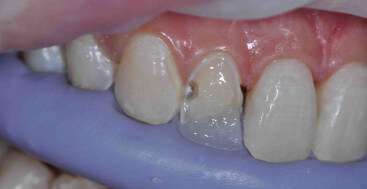
One of the techniques we master when doing indirect restorations is matching the tooth reduction to the thickness of the layers of ceramic the technician needs to give us our final requested esthetics. The concept is identical when completing a direct composite veneer. We will utilize multiple layers of composite, each has a different set of light properties that create opacity, hue, chroma and value. It is the combination of these layers of differing light properties that result in the final esthetics. This thickness of material must be added to the existing tooth structure and create a tooth that is correct in position, contour and proportion. Therefore, unless we are always working on undersized teeth we will need to prepare the natural tooth to create space for the correct amount of composite.
Recently I attended a program with Newton Fahl, a master at direct composite layering. He addressed the concepts of using differing types of composite ( usage and brand) due to their color and light properties, and his layering technique.
Opaque layer
- .35mm in thickness as a default
- Provides opacity and value for the final veneer.
- Existing opaque composites range from 45-100% opacity. Using something too opaque now requires thickness to cover the density of this layer.
- Use the correct hue and chroma, and vary the value based on thickness of this layer.
Dentin layer
- .35mm in thickness as a starting point
- Choose composite based on opacity, hue and chroma.
- Increased thickness increases chroma and opacity and decreases value.
Enamel Layer
- .5mm as a minimum
- This layer brings hue, value and translucency to the restoration
- Effects are added within this layer, such as decalcification and craze lines using composite stains.


Was Newton’s course at Cosmedent? Or did he have the chance to speak about the Estellite Omega system. I have not had a chance to play with it yet. But Cosmedent’s microfills seem still to be the standard for final layers.
Hi Aly,
It was at the SCAD meeting in Chicago. Newton did discuss both the Cosmedent composite, which I have and the Estellite which I also have not had a chance to try yet.
Lee
I’m glad to know that they are very keen with the alignment when it comes to veneer layering. My dentist lexington told me that it is very important to know the right size and the right alignment for the customers satisfaction. Remember, we have to make it comfortable as mush as possible.